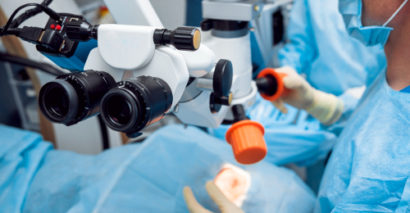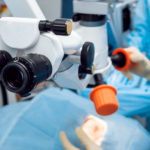Can I Have Cataract Surgery after LASIK?
Written by Dr. David Evans Last modified on April 22, 2019
I wrote a post a couple years ago that described LASIK vs. cataract surgery due to the fact that we receive many questions from our readers when it comes to these two popular procedures. In that vein I wanted to tackle another LASIK/cataract issue that many people seem to be confused about — the question of whether you can have cataract surgery after you’ve had LASIK.
For those of you looking for the short and sweet response, the simple answer is “yes,” you can have cataract surgery if you’ve previously had LASIK. But in order to understand why, let’s take a quick look at both surgeries:

LASIK
LASIK is a laser procedure that corrects common refractive errors like nearsightedness (myopia), farsightedness (hyperopia) and astigmatism. Refractive correction is achieved through reshaping the cornea, the outermost layer of the eye.
Cataract Surgery
Cataract surgery is a procedure that involves removing the natural lens of the eye — which is clouded due to the presence of a vision-degrading cataract — and replacing it with an artificial intraocular lens (IOL).
Basically, LASIK surgery treats the cornea and cataract surgery treats the lens of the eye. Treating one doesn’t inhibit treating the other. Which of course not only means that you can have cataract surgery after LASIK, but also that you can have LASIK after cataract surgery. However, the latter is becoming more of an unlikely scenario given the advancement in IOL technology. Premium IOLs can be fully customized to correct any refractive errors and potentially eliminate the need for a procedure like LASIK after cataract surgery.
What’s more, this green light for post-refractive correction cataract surgery isn’t merely reserved for LASIK (that’s just the question I field most regularly). Indeed, cataract surgery can be performed after any type of refractive laser vision correction, including PRK, LASEK and epi-LASIK.
An Important Caveat
You can have cataract surgery after having previously had LASIK surgery, but one caveat to keep in mind is that it’s helpful if your cataract surgeon has complete records of your vision prior to undergoing LASIK. Without this information, the IOL selection process may not be quite as precise as it would for a patient that had not undergone LASIK.
Fortunately, most people shouldn’t have any problems obtaining their records, meaning that your cataract surgeon should be able to identify the correct lens power for your IOL, making your treatment just as predictable as it would be for a patient who had not had LASIK.
If you’ve previously had any such laser vision procedure and have since developed a cataract, speak with a cataract surgeon about your options to get the ball rolling on clearer, cataract-free vision.




